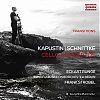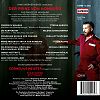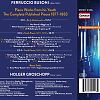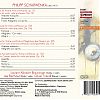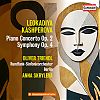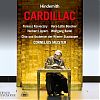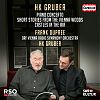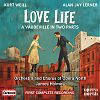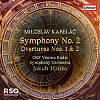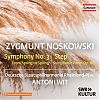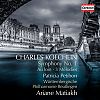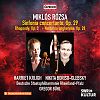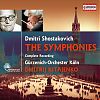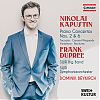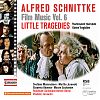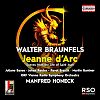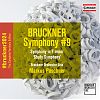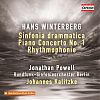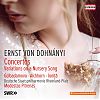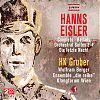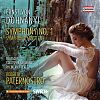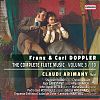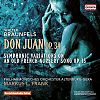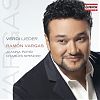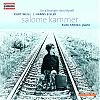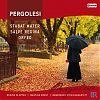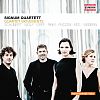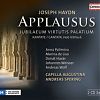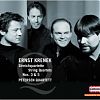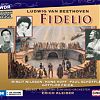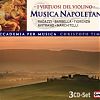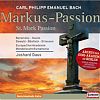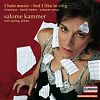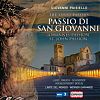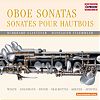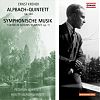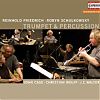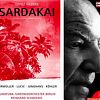cd

Pancho Vladigerov Edition
Ivan Drenikov · Teodor Moussev · Krassimir Gatev · Pancho Vladigerov · BULGARIAN NATIONAL RADIO SYMPHONY ORCHESTRA · ALEXANDER VLADIGEROV
From the diversity of Bulgarian musical culture Pancho Vladigerov stands out as undoubtedly the most important composer for the musical self-conception of modern Bulgaria. In the 1920s he worked as a conductor, pianist and composer in close association with Max Reinhardt at the Deutsches Theater Berlin. He also associated with many German-speaking writers, such as Stefan Zweig, Gerhart Hauptmann, Arthur Schnitzler and Hugo von Hofmannsthal as well as with many fellow composers of the time (including Bartók, Kodály, Strauss, Ravel, Glasunov, Hindemith, Schoenberg, Rachmaninov and Szymanowski). In this light, it is difficult to understand why the imaginative and colourful music by the sound wizard does not possess any appropriate status in European concert halls today. In terms of style, despite his unmistakable personal note it is not wrong to see his piano concertos in succession to the great Slavonic Romantic concerto tradition, such as it was continued after Tchaikovsky by his Russian compatriots Rachmaninov and Medtner. With these recordings, produced in the 1070s in Bulgaria, Capriccio releases an 18CD Vladigerov-Edition to preserve this colourful music also for the next generations.
Hörprobe
Weitere Bilder

CELLO CONCERTOS
Eckart Runge · Rundfunk Sinfonieorchester Berlin · Frank Strobel
In recent years, the jazz-like, classical and modern music by the Ukrainian composer Nikolai Kapustin (*1937) has become an inside tip on classical concert stages. During a visit to Nikolai Kasputin in Moscow ten years ago, the composer entrusted the cellist Eckart Runge with the notes for his Cello Concerto No. 1 op. 85, which, unlike the second one, had neither been performed nor recorded. The work vibrant with energy combines in unparalleled manner colourful symphonic music with the groovy sound of the big band tradition and the virtuosity of a Charlie Parker with the chamber music intimacy of a Miles Davis into a new and fulminant musical diction. With his fascinating, poly-stylistic realm of sound, mirroring an absolutely personal diction, two decades after his death Alfred Schnittke has become one of the composers of the 20thcentury permanently established in the repertoire. The Concerto for Cello and Orchestra No. 1was commissioned by the City of Munich for the inauguration of the Gasteig Cultural Centre in 1985/86.
Youtube
Weitere Bilder

HENZE: DER PRINZ VON HOMBURG
STAATSORCHESTER STUTTGART · CORNELIUS MEISTER
‚But tell me, who could have written a better libretto than my friend Heinrich von Kleist. When I was searching for a language in combination with which my music could produce something new, a diction targeted by my music, I hit on the Prince. . […] The tension between the life of the individual and raison d’état, issues as to the disregard of law and order, man’s quivering before the might of ruling authorities and the courage to resist it, all of that might happen today or might have occurred one or two thousand years ago. […]Many of my endeavours in works of recent years appear through this drama to have reached a new point, i.e. a new polyphony and ist concomitant, freely chosen rigour.’ Hans-Werner Henze
Hörprobe
Weitere Bilder

FERRUCCIO BUSONI: Early Masterpieces
Holger Groschopp, piano
Hörprobe
Weitere Bilder

PH. SCHARWENKA
Albrecht Laurent Breuninger Lise Berthaud Oliver Triendl
Throughout his life, Philipp Scharwenka (1847-1917) was eclipsed by his younger brother, Franz Xaver Scharwenka (1850-1924), who made a world career as a piano virtuoso. It is only from the historical perspective that it becomes clear that Philipp was superior to his brother as a composer. This is demonstrated by this CD, supplementing Philipp Scharwenka’s (meagre) discography with his works for violin, viola and piano.



